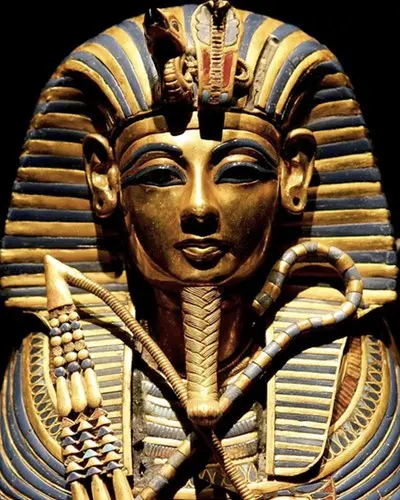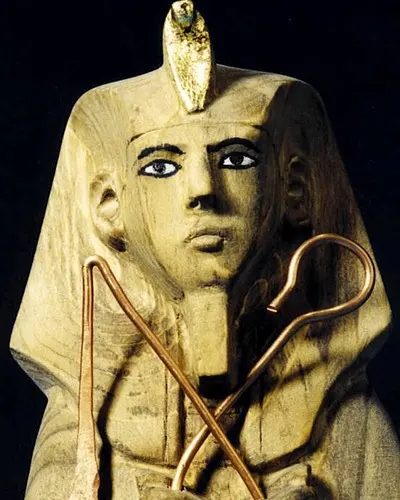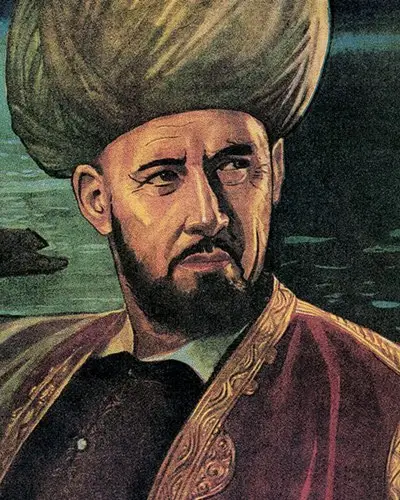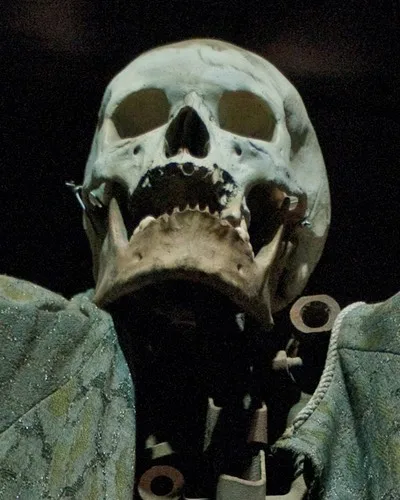There are two schools of thought about the mystery of Rennes-le-Château. One has it hiding the greatest secret in history, the other that it is the biggest hoax of the 20th century.
Either way it is a tale that has captured the popular imagination like few others in recent years, spawning endless books, TV programs and the blockbuster novel and Hollywood film the Da Vinci Code.
As myth, fact or a mixture of both, it has all the classic ingredients of the best adventure stories; lost parchments, secret societies, esoteric codes, buried treasure, and the ultimate bombshell — a forbidden truth so vast that if revealed it would rock Christianity itself to its foundations.
Our story begins in rural France in the 1880s, at a sleepy village atop a hill near Carcassonne called Rennes-le-Château. The village was home to an old church, dedicated to Mary Magdalene, that had fallen into disrepair after years of neglect.
The village’s priest Bérenger Saunière drew up plans to renovate the church. Whilst Saunière himself was of humble means, he managed to secure enough funding to begin the work, which commenced in 1887.
It was during these renovations that Saunière would make a discovery that would not only transform his own personal fortunes but launch a thousand conspiracy theories about Rennes-le-Château that endure to this day.
The exact nature of what he discovered varies between tellings, but the most popular version has it that Saunière found some parchments concealed inside a hollow pillar of the church’s altar.
Some of the parchments detailed royal genealogies dating back centuries, whilst others contained enigmatic writings which appeared to conceal some kind of hidden message.
Shortly after his discovery, Saunière would begin to act in a strange manner. He would excavate large parts of his church, and on several occasions he and his housekeeper Marie Dénarnaud would be seen digging in the cemetery at night. The municipal council even lodged an official complaint about the priest disturbing the graves.
In a diary entry around the time, Saunière makes enigmatic reference to what he had found, using but one word — ‘secret’.
Had Saunière used the parchments to find some kind of treasure? If so, it would help to explain the astonishing financial turnaround the priest enjoyed over the next few years. Suddenly the formally impoverished Saunière seemed to have access to near unlimited wealth.
Throughout the 1890s, he would spend over 650,000 francs on a lavish series of renovations and new buildings at Rennes-le-Château. For a man who only earned 900 francs a year as a priest, the sums were staggering.
And some of the things Saunière built with his new found riches were decidedly strange, like the bizarre neo-gothic tower that doubled as his study or the array of sinister looking statues he decorated the church with.
One such statue, of a snarling, terrifying looking devil incongruously guards the entrance of the church. Some have even speculated this statue was actually of the demon Asmodeus, associated in legend as the guardian of Solomon’s treasure.
But Saunière’s spending spree had not gone unnoticed by the Church authorities. The priest was suspended on charges of ‘mass trafficking’ a common form of 19th-century ecclesiastical fraud were priests would sell non-existent masses.
Whether Saunière was actually guilty of this or not, it could surely not account for the vast scale of his spending. Either way, the priest took the secret to his grave, dying in 1917 without ever disclosing the source of his inexplicable wealth.
More than 50 years later, what had become an obscure, long-forgotten local legend, was revived by French author Gérard de Sède in his book ‘The Accursed Treasure’ in 1967.
De Sède’s book is the basis for all modern Rennes-le-Château myth making. In it, he takes the basic outline of Saunière’s story of finding a treasure, but adds some potent and sensational new elements.
The parchments Saunière found were actually proof that the Merovingian royal bloodline had not died out with King Dagobert II, who was assassinated in 679, but lived on in secret to the present day.
Sigebert IV, Dagobert’s son who was thought to have died in infancy, in fact, survived and was spirited away to Rennes-le-Château, and both he and his descendants were buried there.
De Sède also introduced the mysterious Priory De Sion, a secret order dedicated to protecting the underground Merovingian bloodline and one day bringing its descendants back to the throne of France.
‘The Accursed Treasure’ was co-written by an enigmatic figure called Pierre Plantard, who claimed to be none other than the living descendent of Dagobert II, and rightful heir to the throne of France.
De Sède’s book was a modest success but remained unknown outside of France until a British television writer discovered a copy of The Accursed Treasure in a French bookshop. What happened next catapulted the story to international fame in the most sensational manner.
Henry Lincoln, best known as a writer on the BBC’s long-running sci-fi show Doctor Who, picked up a copy of The Accursed Treasure during a holiday to Cévennes in 1969. He was immediately absorbed by this exciting tale of an impoverished priest who stumbled upon a great treasure.
"To Dagobert II, King, and to Sion is this treasure and he is there dead"
Lincoln poured over every detail and soon, something very obvious leapt out at him. The book contained reproductions of the parchments Saunière had supposedly found. In one of them, curiously raised letters amongst the text clearly spelt a message — ‘To Dagobert II, King, and to Sion is this treasure and he is there dead’.
Certain he had discovered something more than a mere colloquial legend, Lincoln set about on producing a TV documentary about the extraordinary story of Rennes-le-Château.
In 1972, the BBC broadcast Henry Lincoln’s landmark episode of historical history strand Timewatch called ‘The Lost Treasure of Jerusalem’. This was the first time outside of France this amazing story had been told, and it caused a major stir.
Over the next 7 years, Lincoln would produce a further 2 documentaries on the same subject, eventually leading to the book that would, perhaps more than anything, cement the legend of Rennes-le-Château in the public mind.
Teaming up with historians Michael Baigent and Richard Leigh, Lincoln published the Holy Blood and the Holy Grail in 1982, an international bestseller whose enthralling narrative gripped the imaginations of the world like little before or after.
The trio’s hypothesis was absolutely staggering in its import. According to the Holy Blood and the Holy Grail, Saunière’s treasure wasn’t mere baubles, but a great secret, a secret so vast it had to be protected by all means.
The authors research had led them to believe the mysterious Priory of Sion was not just formed to protect the Merovingian bloodline, but was responsible for founding the Knights Templar itself — the guardians of the holy grail.
According to Lincoln, Leigh and Baigent, the legendary ‘San Graal’, meaning Holy Grail, wasn’t a grail at all, but a ‘Sang Raal’, meaning Holy Blood.
In other words, the priest at Rennes-le-Château had not just stumbled upon a lost Merovingian lineage, he’d stumbled upon the greatest taboo of Christianity — Jesus was an ordinary man who married Mary Magdelene and fathered children.
According to the authors, the descendants of Jesus emigrated to Rennes-le-Château, interbred with local nobles and formed the Merovingian royal dynasty in the 5th century AD.
They even found evidence of where some of these descendants were buried, encoded in a 17th-century painting by artist Nicolas Poussin called the Shepherds of Arcadia.
It was also in The Holy Blood and the Holy Grail that another crucial discovery was made. The authors were directed to set of documents in the Bibliothèque Nationale de France called the ‘Dossiers Secrets d’Henri Lobineau’.
Inside was mind-blowing evidence that the clandestine order had over the centuries been headed by such luminaries as Leonardo Da Vinci, Issac Newton, Victor Hugo, Claude Debussy and Jean Cocteau.
It was hardly surprising that the book would make such a massive and enduring impact. It told a thrilling story far better than mere fiction — a fact confirmed by Dan Brown’s plodding bestseller the Da Vinci Code, which borrowed wholesale from Holy Blood.
But in that, the ultimate downfall of the legend of Rennes-le-Château was seeded. The stories started to resemble fiction rather too uncomfortably. In fact, it all seemed too good to be true.
Did a humble parish priest really discover the greatest secret of Christianity?
Evidence For
Saunier’s wealth
Bérenger Saunière kept meticulous records of his official financial transactions during his time as Rennes-le-Château’s priest. The huge sums he details in his books are amazing for a man of such seemingly humble means.
His accounts show he spent 229,351 francs on land and building works, and a staggering 465,000 on consumption over a 10 year period. These figures translate to millions of francs at current values.
His purpose-built home, the Villa Bethania, cost 90,000 francs on its own, almost as much as the nearby Château de Hautefort, a lavish stately home with a beautiful Garden à la française.
And this was only his declared spending, Saunière was known to have paid for structures around the village which don’t appear in his accounts. The priest also never recorded any of his considerable travel and personal expenses.
Also not documented are his vast and lavish collection of valuable books, magazines, postcards and antique furniture, thought to be worth tens of thousands of francs.
The source of Saunière’s wealth is central to the mystery of Rennes-le-Château, and virtually all of the many theories about the village start with Saunière. Indeed, it is a puzzling mystery, where could a humble village priest have acquired such huge wealth?
Had he discovered treasure or documents that proved Christ descendants had lived in the village? Was the source of his wealth hush money from the Catholic Church?
A more prosaic suggestion is that Saunière’s money came from simony, a then common form ecclesiastical fraud known as ‘mass trafficking’, where a priest would sell masses on a scale far beyond what he could actually perform.
Like many other priests, Saunière was certainly guilty of the practice. He was brought up in front of Church authorities because of it and suspended on several occasions. But the scale of his spending would appear to be far greater than could have credibly be accounted for by mass trafficking alone.
in the 1890s, a priest would typically charge around 1 franc for a mass, so Saunière would have had to have promised to conduct several hundreds of thousands of masses, and taken payment for them if this was indeed the source of his finances.
However, the priest kept detailed records about his mass trafficking. He had actually promised to conduct 110,000 masses and taken around 100,000 francs in payment. This then only accounts for a small fraction of the amounts he is known to have spent.
Saunière had a few other sources of income along with the mass trafficking. Gifts, donations, church collections and furniture dealing all bolstered his finances, but only account for the tiniest fraction of his prodigious expenditure.
The conclusion that Saunière did indeed find some kind of treasure seems unavoidable. But the countless theories about Rennes-le-Château vary radically what this treasure actually was.
At the most conservative end, there is some evidence to suggest that Saunière did find something at the church, perhaps later in the restorations.
One of his foster sisters, late in her life in the 1960s, recalled Saunière finding a pot full of gold coins, and other contemporary witnesses remember the discovery of a crypt under the church during the restorations. Saunière even notes the find in his diary, writing “Discovery of a tomb. What tomb?”
That a crypt, the location of which is now lost, existed under the church is well documented, seemingly a family vault of the nearby aristocratic d’Hautpoul family. Henri d’Hautpoul in his will of 1695, mentions the crypt, writing — “After my death, my body must be laid out to rest in the parish church at Rennes in the tomb of my ancestors”.
"After my death, my body must be laid out to rest in the parish church at Rennes in the tomb of my ancestors"
This is particularly interesting because there are records that a treasure was associated with the d’Hautpoul family. In 1645, a shepherd found a stash of gold coins on the lands of Blaise I d’Hautpoul, which encompassed Rennes-le-Château.
Had Saunière discovered a lost crypt of a noble family, full of their riches? Or was it something more esoteric?
Whilst the story of Saunière finding 4 parchments did not emerge until the 1950s, according to Antoine Captier, the grandson of Saunière’s bellringer, some kind of document was found.
Whilst helping with the renovations, Captier’s grandfather had discovered a small glass vial hidden inside an old wood baluster. Inside was a scrap of parchment.
What was on the parchment remains a mystery, but shortly after its discovery Saunière’s nocturnal digging began, and so did his prodigious wealth.
Holy Blood
The 1982 book Holy Blood and the Holy Grail posited the theory that Bérenger Saunière discovered documents that proved the 6th-century Merovingian’s were actually direct descendants of the historical Jesus and his wife Mary Magdelena.
For this to have occurred, evidence would be needed that Jesus had ever married in the first place, an idea rejected by most mainstream scholars due to the lack of explicit references to a wife in the gospels.
However, nothing in the extant gospels actually disavow the possibility, and lack of specific references to a wife could be accounted for by the early Christian establishment’s systematic campaign to downgrade the role of women in the Church.
Some tantalizing clues do survive. In Matthew 26:49, Jesus is described as a rabbi. Rabbis, then as now, are required to marry. If Jesus was really a rabbi and not married it would surely have been noticed and mentioned, yet no such mention exists of the discrepancy in the bible.
Mary Magdelene plays a critical role in Jesus’ life in the gospels, tending to his body after the crucifixion. But if Mary was not Jesus’ wife, it would have been considered highly inappropriate for her to perform such an intimate act as washing and anointing his naked body as depicted in the Gospel of Mark.
Several gnostic gospels also hint that Jesus had a wife and a recently recovered 6th-century Coptic papyrus has Jesus referring to Mary as “my wife” and stating “I dwell with her”.
Establishing the possibility that Jesus may have married is one thing, but evidence that he had children and that they relocated to France remains elusive at best.
That crucial aspect of the Rennes-le-Château legend depends almost entirely on the mysterious Priory de Sion, a secret order which, according to The Holy Blood, was founded in 1099 to guard the secret of Christ’s bloodline.
But what if the Priory wasn’t an ancient order at all, but a modern concoction of an imaginative French conman?
Evidence against
The Fantasist
In terms of documented historical fact, one thing is clear about the Priory De Sion. It was not founded in 1099, but 1956. In that year, Pierre Plantard registered the societies existence with the French authories.
This is the same Pierre Plantard who later co-wrote The Accursed Treasure with Gérard de Sède, which sought to characterize the Priory De Sion as an ancient secret society dedicated to preserving the Merovingian blood line. But back in 1956, the group’s activities were somewhat more prosaic.
Run from Plantard’s apartment, the Priory De Sion produced a journal called Circuit, which largely concerned itself with local matters such as affordable housing and property development. It dissolved less than a year later and continued to exist in name only.
Pierre Plantard was born in 1920, a descendent not of kings, but a 16th-century walnut gatherer. A fervent royalist and anti-semite, Plantard had grand ideas from an early age. In 1940, he offered to assist the collaborationist Vichy regime in fighting a ‘terrible Jewish and Masonic conspiracy’, claiming to have 100 men at his disposal.
The French intelligence services diagnosed Plantard as a fantasist, writing — “Plantard seemed to be one of these strange pretentious young people who set up and run more or less fictitious groups in an effort to give themselves a feeling of importance…”
"Plantard seemed to be one of these strange pretentious young people who set up and run more or less fictitious groups in an effort to give themselves a feeling of importance…"
After the war, Plantard would continue to invent fanciful groups and societies, including the short-lived Priory De Sion in 1956. After this latest effort folded, he would spend the next decade inventing an entirely fictional history for his dormant organisation.
Plantard’s aim was to portray himself as a descendent of the 7th-century Merovingian King Dagobert II and, fantastically, the ‘Great Monarch’ as prophesied by Nostradamus.
In the mid-50s, Plantard learnt of the story of the Rennes-le-Château priest Berenger Saunier and the great treasure he supposedly found in the local church. Plantard liked the story and decided to integrate it into his growing mythology of the Priory De Sion.
Now, rather than a treasure, Saunière actually found parchments that supported Plantard’s claims to be a descendant of the Merovingians, including a fabricated royal lineage and hidden codes that referred to a mysterious secret order called the Priory of Sion.
Teaming up with an eccentric aristocrat and surrealist called Phillipe de Cherisey, the pair faked the parchments, along with a fabricated list of grandmasters of the priory, and deposited these ‘Dossiers Secrets’ in the Bibliothèque Nationale in Paris.
Plantard then teamed up with the writer Gérard de Sède and the entire fantasy was published as The Accursed Treasure in 1967. But De Sède and Plantard quickly fell out in a row over royalties, and it wasn’t long before their hoax was busted.
French investigative journalist Jean-Luc Chaumeil uncovered hundreds of letters between De Sède, Cherisey and Plantard in which they detailed each step of their deception and discussed ways they could combat criticism and keep the hoax going.
All three men would eventually admit they had made the whole thing up. But it was too late, the trio’s relatively trivial fraud had already taken on a life of its own.
Despite its status in France as an admitted hoax, three writers were about to appropriate Plantard’s self aggrandising fantasy and take it far beyond anything he had ever intended.
The Holy Deception
Seemingly unaware that the Dossier Secretes were a fictional invention, Henry Lincoln, Michael Leigh, and Richard Baigent used the documents to weave a vast historical conspiracy theory.
According to the authors, the order of the Priory De Sion, actually a local housing pressure group founded by Plantard in 1956, was an ancient cabal that created the Knights Templer to protect and preserve the bloodline of Christ.
The trio’s research was almost entirely based on the fabrications of Plantard, but with several extraordinary leaps of logic connecting a whole series of completely unrelated new elements.
Whats interesting about the Holy Blood and the Holy Grail is it doesn’t really consist of evidence as historians would understand it. The authors dubbed their method ‘synthesis’, essentially wild speculation, and would use it add such ingredients as Leonardo Da Vinci, the Templars, the Cathars, Masons and the EU to an already heady brew.
Most of the connections the writers make in The Holy Blood are regarded by mainstream academics as pseudo-history. Although since the foundation of their hypothesis is based on the fantasies of a French con-man, the author’s claims are already seriously undermined.
It was widely commented at the time of the books release in 1982 that, whilst it made for dubious history, it was still a great story. That’s undoubtedly true, but the enduring appeal of this story is that it’s still presented as fact.
In Foucault’s Pendulum, Umberto Eco’s brilliant parody of the Holy Blood and the Holy Grail, he wrote — “Believe that there is a secret and you will feel an initiate. It doesn’t cost a thing. Create a truth with fuzzy edges: when someone tries to define it, you repudiate him. Why go on writing novels? Rewrite history”.
Did a parish priest at Rennes-le-Château discover the biggest secret of Christianity? - add your comment below


















